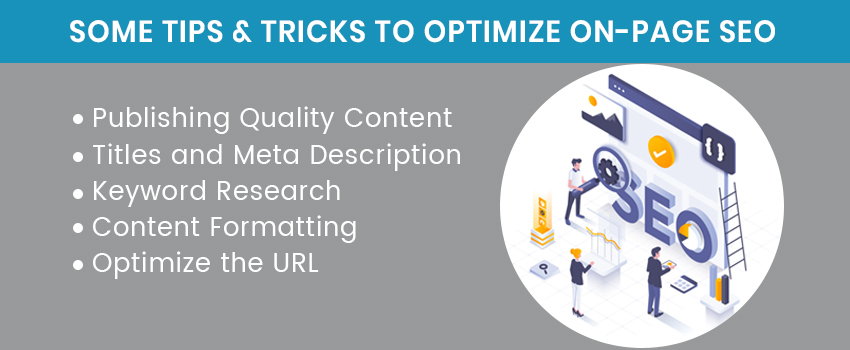On-page SEO plays an important role in improving your web pages’ overall ranking in the search engine. Once your pages will be placed higher, it will gather more organic traffic, which will eventually boost your existing market share. However, the majority of SEO practices use outdated strategies to optimize your website. Unfortunately, in 2020, such techniques provide minimal improvement as far as your website ranking is concerned. So, here, in this article, PathInteractive has covered five different up to date tips and tricks to optimize your pages.

1. Publishing Quality Content
If you look closely, most of the websites placed on the first page of the search engine offer nothing but high quality and well-researched content. These are very specific and written in a very simple manner; as a result, anybody will be able to understand them. Here are some of the important aspects of creating quality content:
- You are expected to publish original content, and before posting it on your website, make sure to carry out a plagiarism test.
- It is not advisable to use the same content on two different websites, even if both belong to you only.
- Even if you are specialized in creating video, graphics, or image content, it is necessary to include text for describing them.
- It is advisable to take ample time while researching the topic. More often than not, a well-researched content gets positive feedback from the audience.
- If you are publishing content, try to cover both sides of the story.
2. Titles and Meta Description
Each of the pages on your website must have different titles. Your titles must be short, but at the same time, it should describe the nature of the page properly. You can also use power words and numbers in order to make your titles more interesting.
You need to add a unique meta description for each of the pages. Therefore, it is not advisable to use auto-generated meta descriptions. You can also add relevant keywords in the meta description page as well.
3. Keyword Research
Before writing a piece of content, you are expected to carry out extensive keyword research. Some of the most effective places to find the keywords are:
- Google suggests it can be the primary source to find keywords. Once you type the nature of your content on Google, it will showcase a number of suggestions, and you can include them on your page.
- On the Google search engine, there is a section called: ‘People also ask’. You can include those phrases on the subheading of your content to attract more audience.
- At the end of each blog, there is a section named related searches. These are nothing but popular search phrases, and it is advisable to include some of them on your page.
4. Content Formatting
Most people just ignore the aspect of formatting while publishing their content. The basic purpose of formatting is to make your content readable. Here are some of the points that you need to keep in mind while formatting your content:
- Highlight the important part of your content by using options, such as underline, Bold, etc.
- Try to use a form having a size of more than 14px.
- Small paragraphs are becoming a new trend in the market.
- Maintain enough spacing between two adjacent lines.
5. Optimize the URL
An SEO-friendly URL will boost the engagement considerably. You need to provide special attention to URL structure and optimization. Here are some points that will help you in maintaining SEO-friendly URLs:
- Your URLs must contain less than 255 characters.
- In order to separate different parts of an URL, you should use characters like (/) or (-).
- Avoid auto-generated URL, and remove the date from the URL.
- You should include keywords in the URL.
Wrapping it off
By following these above-mentioned techniques, you can optimize your website and get a boost in organic traffic. To make your pages more interesting, you can include relevant images as well. But, you need to make sure that these images should not slow down your websites. A smaller sized image works better for optimization. Besides, never forget to mention the source of the image.
